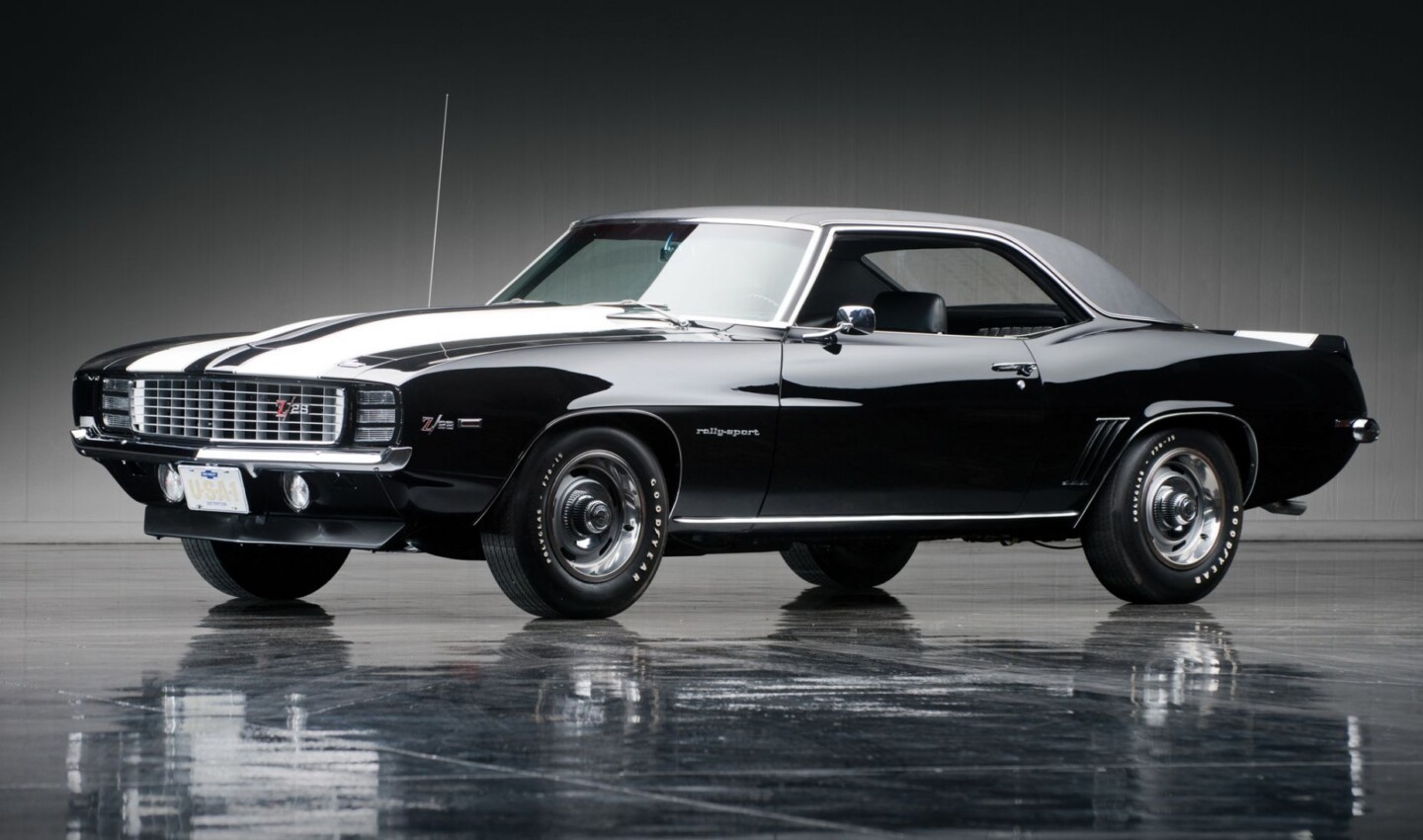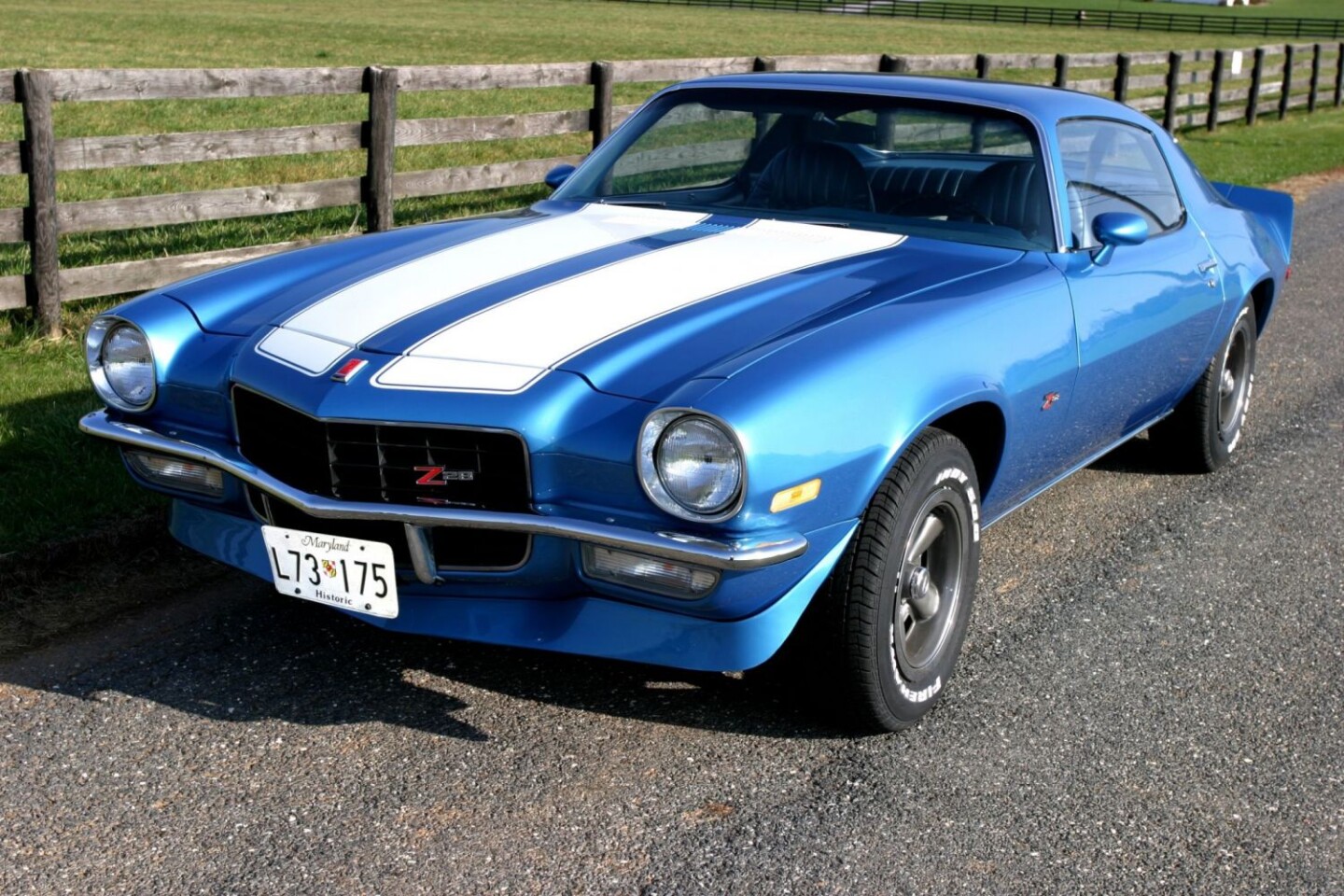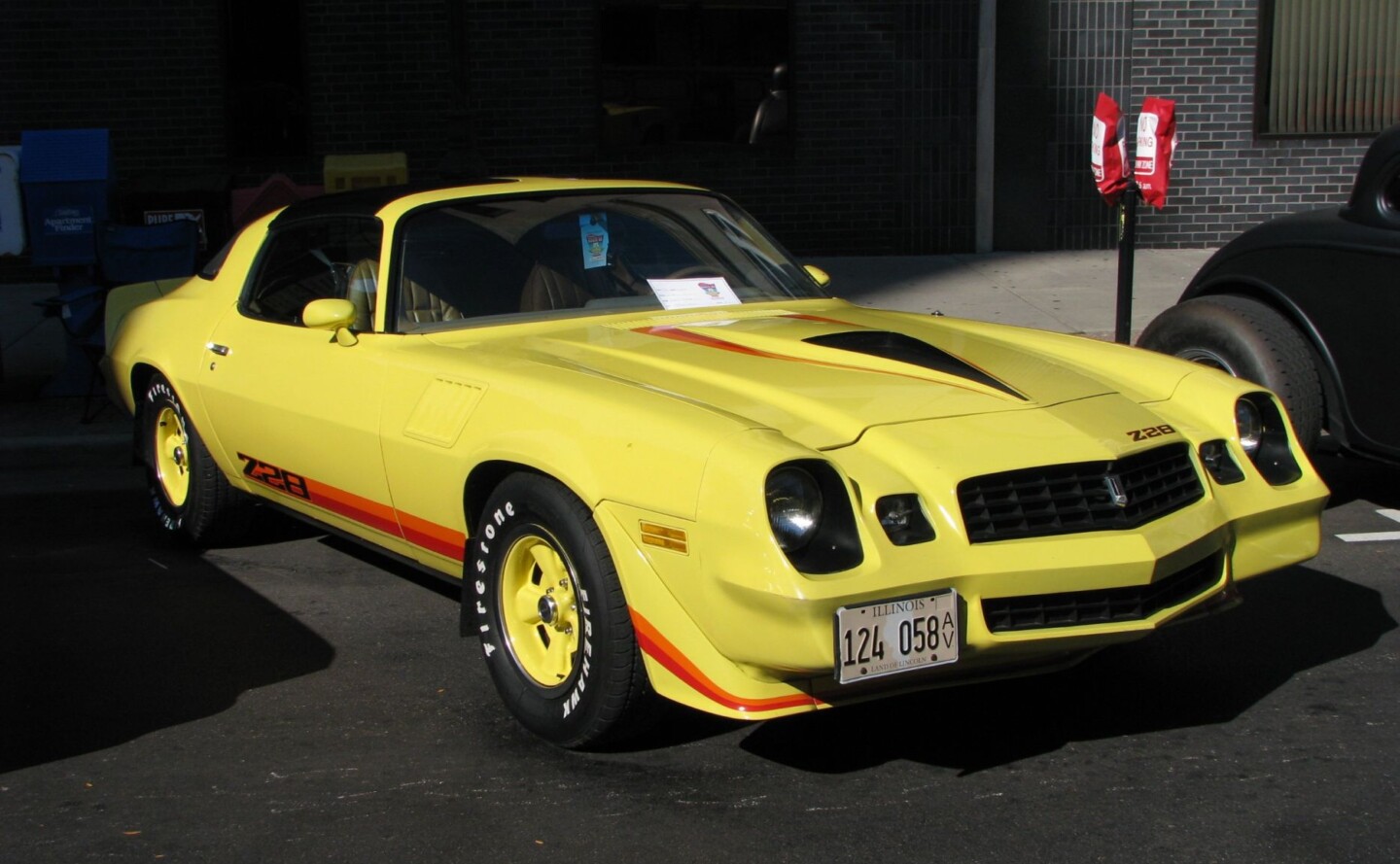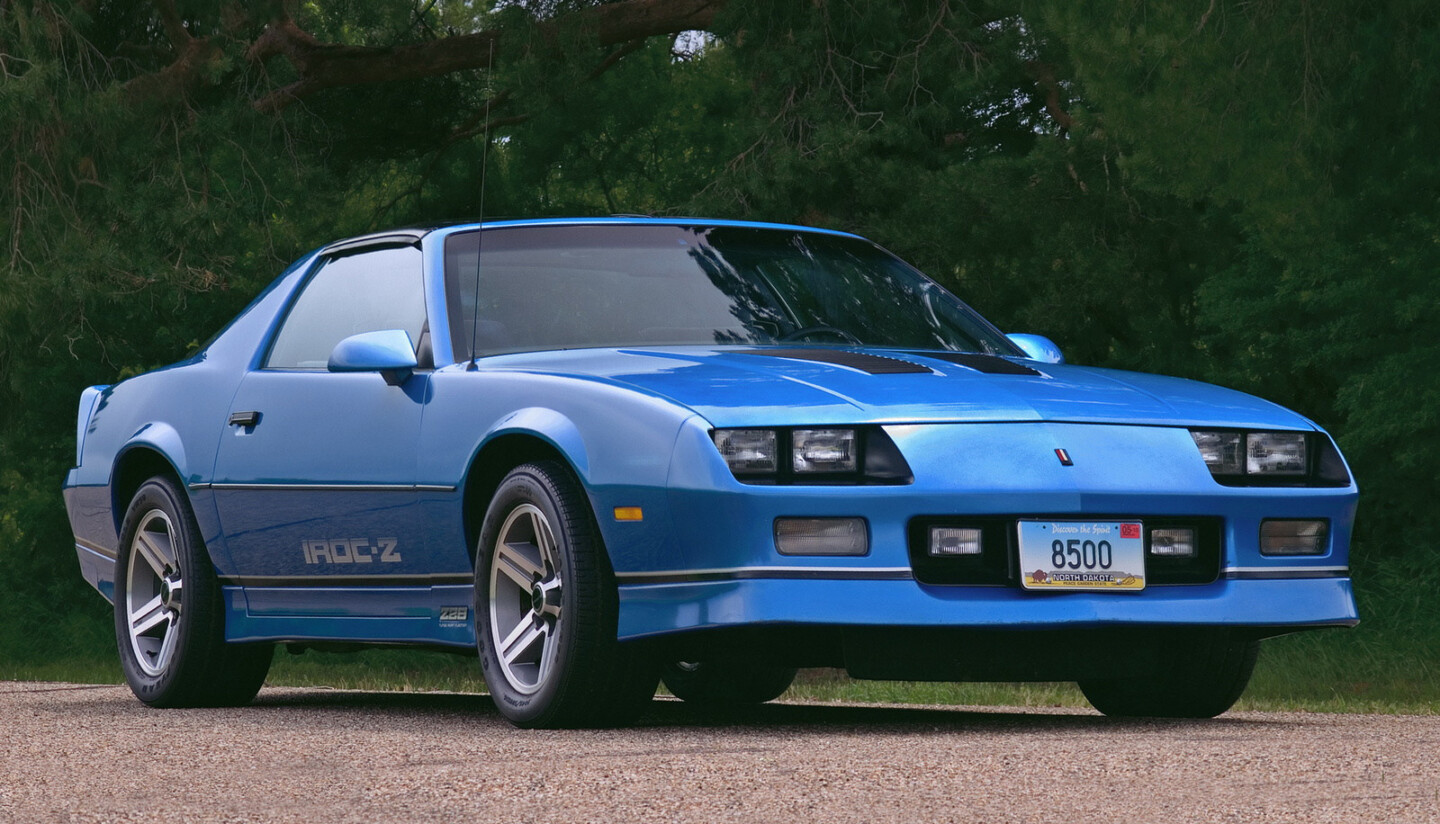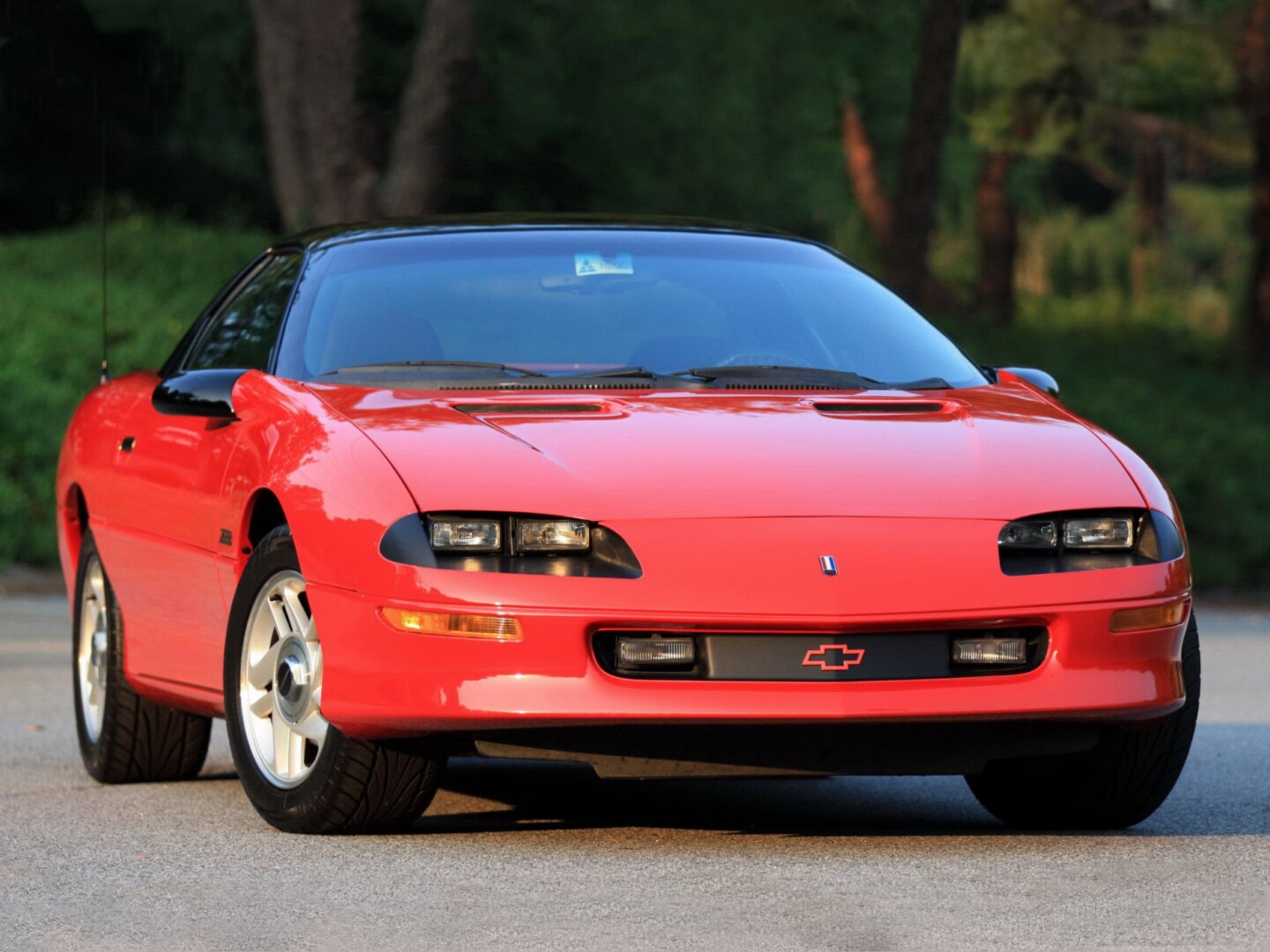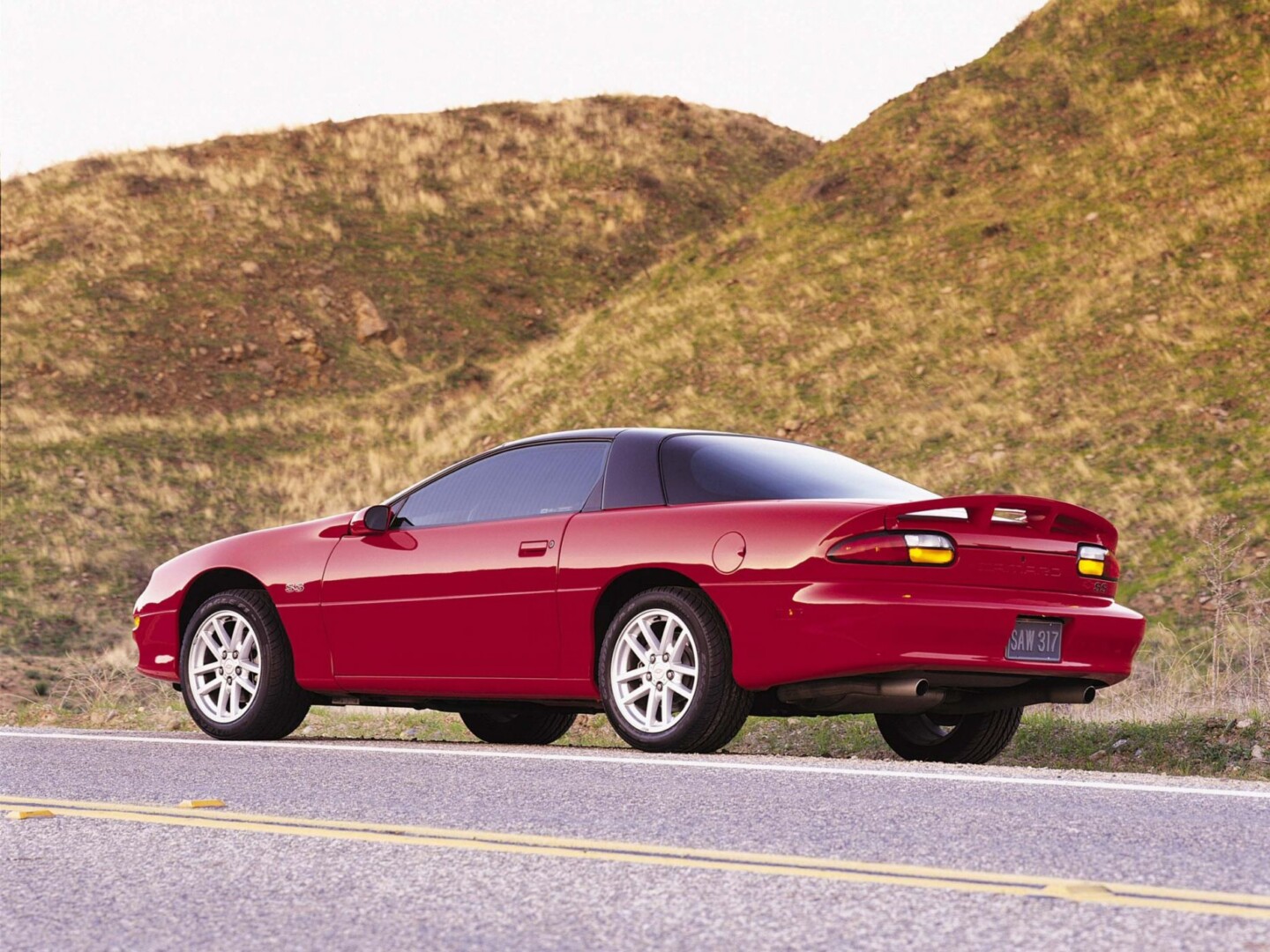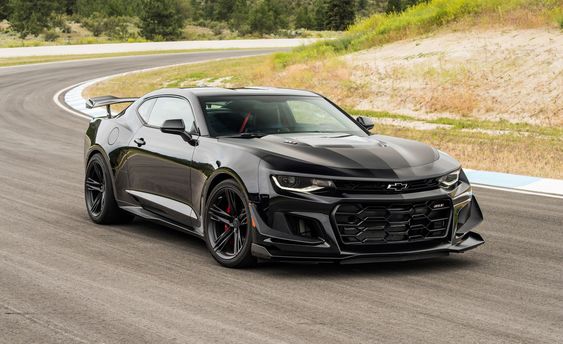March 22, 2023. It is a date that will live in infamy for muscle car enthusiasts, marking the bittersweet demise of an American automotive superstar – the Chevrolet Camaro. After six generations and over 5.7 million units sold, the iconic Chevy pony car has rolled off the assembly line for the final time, leaving behind a legacy that transcends asphalt, horsepower, and steel. Not to mention establishing the mullet as a global hairstyling phenomenon. Before we say goodbye with a final burnout, let’s take a victory lap through the storied past of the Camaro, remembering the six generations that have indelibly imprinted coolness onto the American automotive landscape.
In The Beginning
Any backstory of GM pony cars usually leads back to the Mustang, so let’s start there. Of all the automotive battles of the last 100 years, none come close to the Mustang and Camaro rivalry. The original Mustang was unveiled by Henry Ford II at the World’s Fair in Flushing Meadows, New York, on April 17, 1964, and the automotive world was turned on its ear. Lee Iacocca’s perky little pony was good-looking, affordable, and sold a million copies in 18 months. It was a huge hit that blindsided General Motors and took the company two long years to field a competitor.
The irony of this battle was Chevrolet had unknowingly “invented” the modern sporty coupe when it introduced the Corvair in the fall of 1959. It took a few years to fully distill the sporty turbocharged Monza model, but for all intents and purposes, it was similar in size and personality to Ford’s new “it” car. Compared to the new Mustang, the Corvair Monza was suddenly an also-ran, a cool little coupe with a six-cylinder motor in the wrong place.
First Generation (1967-1969): The Camaro Joins The Pony Car Revolution
Introduced in the fall of 1966, the First Gen Camaro and stablemate Pontiac Firebird, burst onto the scene as an antidote to Mustang’s galloping success. With its aggressive stance, long hood, and short deck, the Camaro was a head-turner, exuding a raw power that clicked with a generation hungry for speed and freedom.
The new F-body was a unibody car with a front subframe, sharing its platform with the Chevy Nova. The car stuck with this chassis architecture until 1981. From this humble starting point, a smorgasbord of models, from the straight six “Secretary Special” to the race-ready 302 cubic-inch Z/28, were spun off. These early Camaros were stars on race tracks and Trans-Am circuits as well, solidifying their place as muscle car royalty. The 1969 version is considered by many to be the best of the First Gen Camaros, continuing with big block power, more performance goodies, and a larger footprint.
In 1969 Chevrolet released just 69 examples of the first-ever Camaro ZL1. It used an all-aluminum 427 cubic-inch big block with 16 valves and a 12.5:1 compression ratio. This helped the 427 develop 430 (gross) horsepower and got the car to 60 mph in 5.3 seconds. Its arch-rival, the 1969 Mustang Boss 429 couldn’t even get a whiff of the Camaro ZL1’s exhaust.
Second Generation (1970-1981): A Camaro Raised By A Pack of Ferraris
The early F-body was a reaction to the Mustang’s fresh good looks, lifting the car’s proportions directly from Ford’s designers. Bill Mitchell, head of GM Design, was intent on rethinking the car for the 1970 model year with styling not influenced by Detroit, but by exotic beauties from Italy’s Enzo Ferrari.
The result was the 1970-1/2 F-Body, in two divisional flavors. They were introduced in the spring of 1970, due to a strike at GM. It was a styling tour de force and every other pony car on the market was suddenly obsolete. For a brief moment, these early Second Gens basked in an era of gross horsepower rating, chrome bumpers, and little emission controls. A split-bumper Rally Sport model from this era is one of the prettiest cars ever built, in our humble opinion.
By 1974, the Mustang became a glorified Pinto, and Chrysler euthanized the equestrian E-body, leaving GM with the keys to the ponycar kingdom. Wisely, GM dispatched their best marketing and design people to the Camaro and embarked on a steady stream of improvements and tweaks that gave the car six years of record sales.
The rubber bumper Camaros of the late ’70s were down on power and ultimately gave the cars a bad rap back in the day. In hindsight, they benefitted from the federally mandated bumper standards and flourished because of it. Today, rubber bumper Second Gens are the darlings of the restomod era as they swallow up an LS motor nicely, and 650 horsepower is the antidote to every single “Malaise Era” debit one can think of.
Third Generation (1982-1992): Downsizing But Not Backing Down
Next up, let’s take a look at the Third Gen Camaro. The 1980s brought more fuel efficiency concerns, forcing the Camaro to shrink and adapt. The new car was lighter and gained agility and nimbleness. It was equipped with a four-cylinder engine for the first time, but a 305 cubic-inch Cross Fire Injection V8 could be ordered. MacPherson struts up front and a coil-sprung rear axle were major chassis upgrades. The Third Gen was also the first Camaro with a hatchback.
The iconic IROC-Z trim, born from the racing series, debuted in 1985 and became a symbol of the MTV era. For the first time, the Camaro was available with a 5.0-liter Tuned Port Injection (TPI) LB9 V8 rated at 215 horsepower. While this may seem ho-hum today, TPI was very exotic and became a bragging rights buzzword in the Ronald Reagan eighties.
By 1987, the 350 cubic-inch L98 was introduced and gave a boost to 225 horsepower at 4,40o rpm and 330 lb-ft of torque. This era of the Camaro lasted for ten years. It is remembered as being light, easy to modify, and the perfect home for old-school small-block, big-block, or LS/LT engines.
Fourth Generation (1993-2002): The Camaro Returns To Its Roots
The 1990s saw a revival of V8 performance cars, and the Camaro followed suit. Think of Third Gen 2.0 and you get the idea. Not only was every dimension smoothed and improved, but the new F-Body was now a “mixed material” build with Reaction Injection Molding (RIM) bumpers, front fenders, and composite doors. The roof and rear quarters remained steel.
Under the hood, the Fourth Gen introduced the world to the 275-horsepower LT1 reverse-flow small block V8. It was a technological marvel that had potent power and performance. It also introduced hundreds of thousands of GM owners to the Opti-Spark distributor, located underneath the water pump. What could go wrong? Nonetheless, what GM engineers learned from the old LT1, they channeled into a completely new LS mill that would debut on the 1997 C5 Corvette and find its way to GM’s F-bodies in 1998.
For many enthusiasts, the delineation between old-school and new-school GM muscle occurred in 1998. Chevy stuffed their all-new LS1 V8 under the Camaro’s hood and then sent it off to a plastic surgeon. With a new “Catfish” nose and 305 horsepower, the LS1 Camaro became a legitimate entry-level “Corvette.” LS-equipped F-Bodies are all the rage today as they are so intrinsically competent, reliable, and fast. In 2002, Camaro had a near-death experience, “dying” and then coming back to life eight years later.
Fifth Generation (2010-2015): Retro Muscle For The Modern Era
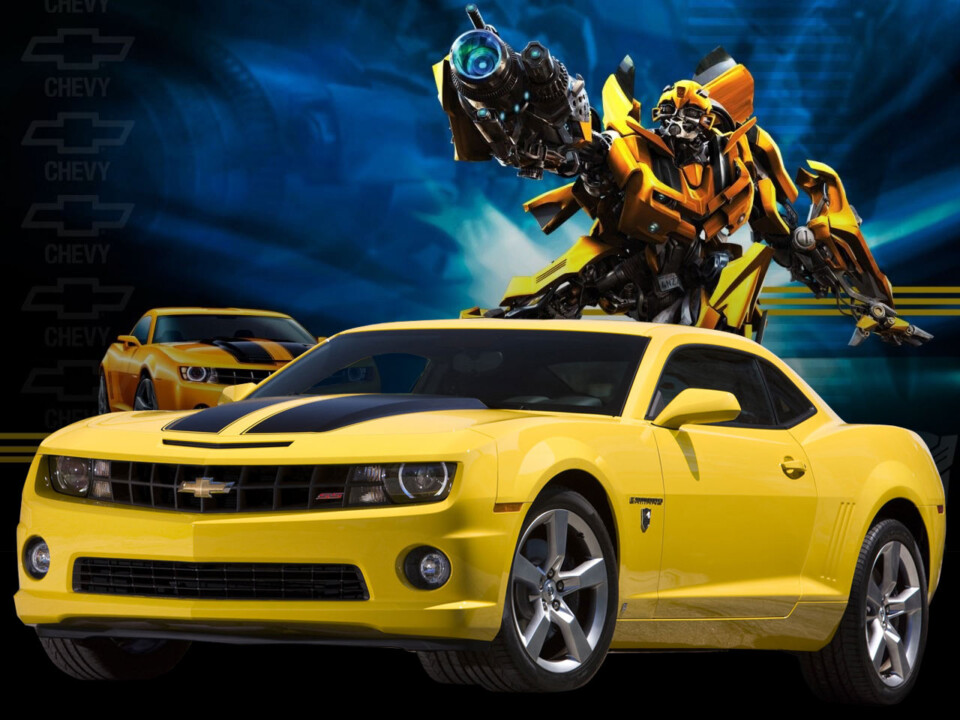 After eight long years, the Camaro returned. The 21st century saw the Chevy Pony car embrace its heritage while pushing the boundaries of modern technology. The Fifth Gen was a retro-inspired masterpiece, drawing heavily from the iconic 1969 design. However, this wasn’t just a trip down memory lane; the Camaro was reborn with cutting-edge engineering, featuring the 6.2-liter LS3 V8 that pumped out a stump-pulling 426 horsepower. This generation proved that the Camaro could stay true to its classic roots while remaining relevant and thrilling in the modern age. This generation also starred in the blockbuster “Transformers” film, cementing its place in pop culture history.
After eight long years, the Camaro returned. The 21st century saw the Chevy Pony car embrace its heritage while pushing the boundaries of modern technology. The Fifth Gen was a retro-inspired masterpiece, drawing heavily from the iconic 1969 design. However, this wasn’t just a trip down memory lane; the Camaro was reborn with cutting-edge engineering, featuring the 6.2-liter LS3 V8 that pumped out a stump-pulling 426 horsepower. This generation proved that the Camaro could stay true to its classic roots while remaining relevant and thrilling in the modern age. This generation also starred in the blockbuster “Transformers” film, cementing its place in pop culture history.
The Fifth Gen rode on GM’s Zeta platform which was developed by its Australian subsidiary. This RWD architecture was designed for scalability and could accommodate a wide range of features such as wheelbase length, ride height, windshield angle, and roof line.
Zeta’s suspension system was all-independent and utilizes a MacPherson strut coupled with a dual ball joint lower A-arm for the front and a four-link independent setup for the rear wheels. The engine was mounted slightly aft of the front axle giving close to 50/50 weight distribution. Even though the retro Camaro was criticized for its sightlines from the driver’s seat, the car sold well. The supercharged ZL1 model with its 580 horsepower LSA V8 created a highwater mark in factory Camaro power output.
Sixth Generation (2016-2023): Refining The Legend
The final chapter of the Camaro story, the Sixth Generation, focused on refinement and precision. While still retaining the aggressive styling, the new Camaro adopted the lighter, Alpha chassis that was an update on the previous Zeta platform. The real news was the addition of the 455 horsepower Gen-V LT V8. The ZL1 now sported the 650 horsepower LT4 V8 and is a force to be reckoned with.
The sightlines got worse on the Sixth Gen car and we suspect it turned off a lot of buyers, especially women. Sales withered and even the ancient Dodge Challenger trounced it in the sales department. Nonetheless, the Alpha chassis was sublime, and with potent LT power, the Sixth Gen is the best of the breed and commensurately, bows out on a high note. GM turned up the Lansing assembly plant and kicked out a lot of Camaros before they pulled the plug in late December 2023. If you want the best of the best when it comes to GM pony cars, get one while the getting is good.
Epilogue
With both the Dodge Challenger and Camaro biting the dust, that leaves the Ford Mustang as the only remaining American muscle car. Dodge is promising a new competitor, inspired by the Charger Daytona SRT concept, and we expect that whatever Chevy cooks up to wear the Camaro nameplate next will include some form of electrification. Let’s just pray to God that it isn’t a Mustang Mach-E competitor.
For now, your Chevy dealer has a good stock on hand of new Camaros. Go down and see your friendly Chevy sales associate and buy one, NOW. If you miss this boat, find a good used example, from whatever generation turns you on, and preserve it for future car fans to see and enjoy.




